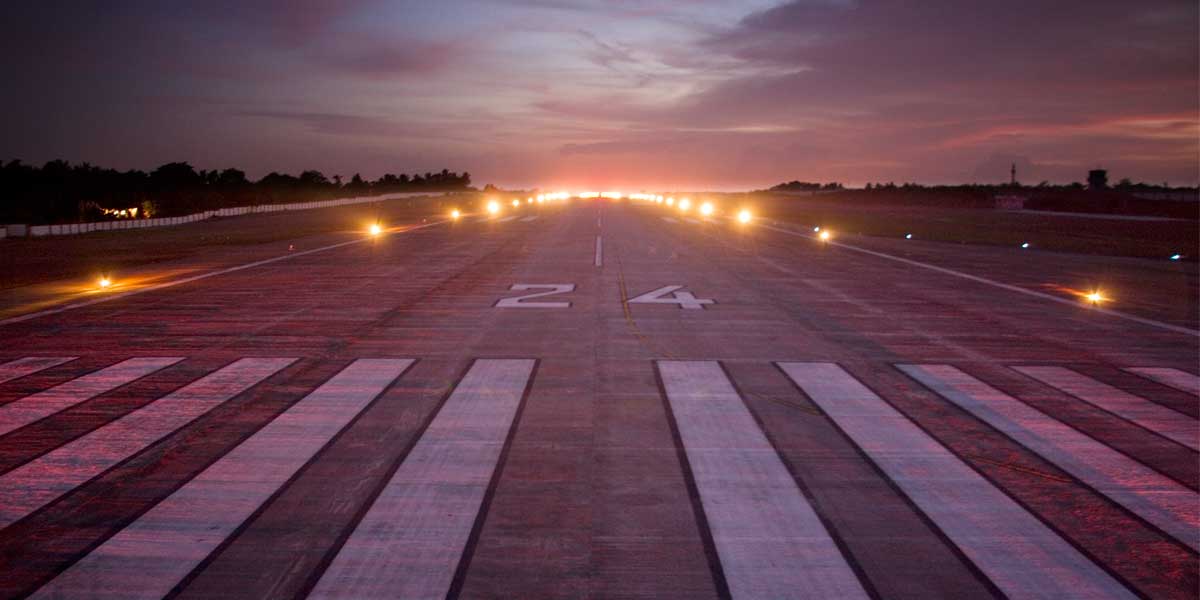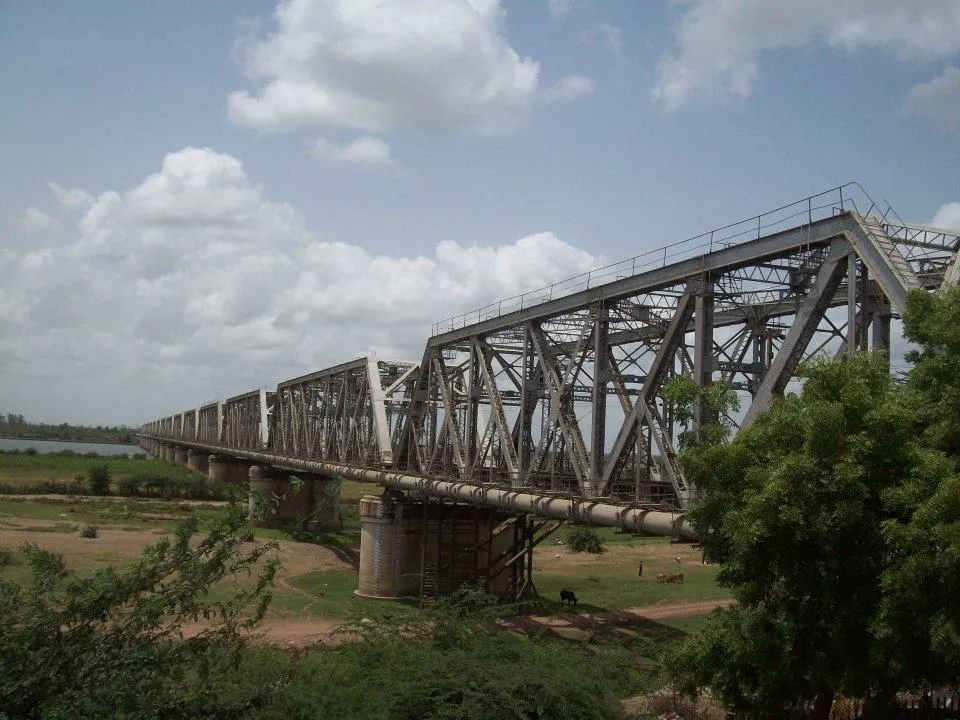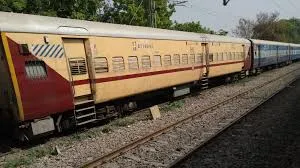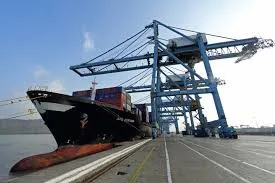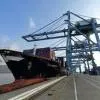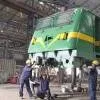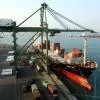The Center for Strategic & International Studies (CSIS), a US think-tank, recently observed that economic trends in the Indo-Pacific prior to the Covid-19 pandemic forecast, among other things, a heightened focus on closing the infrastructure gap.
Then Covid-19 struck, and Indo-Pacific countries that particularly struggled to contain the pandemic, such as India and the Philippines, had to put infrastructure development projects on hold in order to prioritise addressing the immediate impacts of the crisis—health, poverty, unemployment, breakdown of supply chains and services, and struggling SMEs. Going forward, the CSIS expects these countries to face more severe economic contractions.
So, how will the infrastructure gap be closed?
By putting the focus back on infrastructure.
Infrastructure is known to be a powerful catalyst for socio-economic development. The infrastructure industry per se makes up 6 per cent of the global Gross Domestic Product (GDP) and workforce. Government investment in infrastructure has an annual multiplier effect of 0.4 to 2.2 times on the GDP. Infrastructure can help generate at least 10,000 jobs for every $1 billion invested.
That’s why KPMG has predicted that infrastructure is set for a big leap after the pandemic recedes. Infrastructure stimulus packages can be transformational beyond the immediate crisis. Indeed!
Elias George, Partner and Head, Infrastructure, Government and Healthcare, KPMG in India, expects India’s transition to renewable energy, the creation of modern urban infrastructure, farm-to-market and transport logistics, and domestic aviation to lead the rebound.
Since infrastructure projects are characterised by high capital intensity and long gestation periods, often leading to a funding gap, George suggests strengthening the bond market, public investment and catalysing private investments. Meanwhile, he expects India’s unique ability for frugal innovation and jugad to help tide over the current crisis.
Interactions with leaders of companies engaged across key infrastructure sectors suggest that innovating and strategising has certainly helped them surmount the biggest challenges of 2020, the year of Covid-19.
AirportsOur work did not qualify as ‘essential’ during the covid-19 lockdown, so our work came to a standstill until June, says Dr Milind Deshpande, Chairman and Managing Director, Vishal Infrastructure, which is implementing a cargo hub at the new international airport in Bengaluru; runways in Ranchi, Jabalpur, Kolkata, and has just been awarded the Chauba airport runway; and has recently completed a runway extension in Vellore and air side works in Madurai.
“By June, the monsoon had set in and we had to contend with poor weather conditions,” continues Deshpande. “Mobilising labour was another key challenge, especially in Bengaluru and Kolkata, where migrant workers got the opportunity to travel home.”
To tide over the labour scarcity, Vishal Infrastructure invested in automation which, interestingly, “we had earlier thought was too expensive,” to quote Deshpande. “For instance, we were using labour to feed and segregate material in the asphalt plant, which we have now automated. We were using labour for runway markings but are now using machines for the job. Demolition is another task we are now doing mechanically. Also, wherever possible, we are focusing on upskilling and redeploying labour, especially those with some basic education, as plant operators, drivers and so on.”
Now that labour is returning and the monsoon is over, the company’s work has resumed in earnest but Deshpande expects it will take another two months for the situation to normalise.
As regards the flow of work, since the privatization of airports is on the cards, the Airports Authority of India (AAI) is going slow on some projects, observes Deshpande. “Other tenders are coming out and contracts are being awarded but it remains to be seen whether payments are made promptly. So far, some payments have come through but with airports working at barely 10-25 per cent capacity, we hope other payments are timely. Unlike roads and rail, the AAI does not have a minister at the helm to push through project payment mechanism and other reforms; that is a constraint.”
Deshpande also notes that though the government has given contractors time extensions and returned bank guarantees for the value of work already completed to ease their cash flow, faster decision-making would help make up for the time lost to the pandemic. “For instance, labour security clearances used to take 2 days, now it takes 21 days. These and other procedural inefficiencies could be weeded out.”
PortsDemand supply mismatches impacted shipping volumes initially, the lockdown impacted cargo and manpower movement, and social distancing with enhanced safety checks impacted productivity, says Rajiv Agarwal, CEO and Managing Director of Essar Ports, elucidating the three key challenges faced by the ports sector.
These constraints impacted costs and revenues, built-up inventory at jetties, and delayed ongoing projects.
Eventually, some restrictions were lifted and the Indian ports sector regained momentum and observed a spike in traffic. After an initial dip in April 2020, Essar Ports has seen terminals along the western and eastern coasts come back to pre-Covid level performances. For the six months ended September 30, 2020, the company recorded revenue for 23.8 million tonnes of cargo. “The recovery has been quick owing to increased demand from the power, steel, mining and oil sectors,” shares Agarwal. “However, the overall revival in cargo volumes and the sector would wholly depend on how quick the demand and actual consumption meets the gap.”
For FY 21, Agarwal expects to report similar numbers as FY 20 when the company registered a growth of about 23.5 per cent in cargo throughput.
“Adapting, mechanisation and innovating with state-of-the-art operations was the biggest opportunity of 2020, says Agarwal. “Essar Ports was able to ensure minimum human intervention through our mechanised facilities. Digitisation has eased working and led the change. Going forward it will be the way we conduct business.”
RoadsSkilled labour shortages, staff movement restrictions, restricted working hours and supply chain disruptions were our biggest challenges, shares Sanjay Londhe, Director & CEO, Projects, Ashoka Buildcon.
“Skilled labour shortages in Gujarat and Karnataka were overcome by effectively deploying locally available labour and air transporting skilled labour and other staff from various parts of the country,” explains Londhe. “Early on, supply chain issues were overcome by consuming earlier stock extra material. Thereafter, some materials and machinery parts were bought at higher rates to ensure work continuity, and the construction schedule and method were augmented to work with the available materials. These measures entail effective risk management skills and planning. Throughout, we enforced the 6-Ss (Self-Declaration, Safety, Self-isolation, Social-Distancing, Sanitisation, Self-Discipline).”
“Digital technologies (drone surveys) were used to monitor the progress of work and understand difficulties at the field level, and thereafter, digital platforms were used to hold virtual meetings to discuss concerns with all the stakeholders including clients and fast-track the identification of solutions. For instance, in six-laning the 40 km stretch between Khairatunda and Barwa Adda on the NH-2 in Jharkhand, 10 km was obstructed. With the support of the local administration, we were able to make available the obstructed part for early completion.”
“Relief granted by the Government of India under the Atmanirbhar Bharat programme, payments made on the progressive basis instead of the milestone basis, was effectively availed, which helped maintain the company’s cash flow,” continues Londhe. He attests to working at more than 90 per cent of the previous years’ performance level. He expects to surpass the previous year’s performance level as a result of the central government’s continued push for road infrastructure and adequate work.
RailTata Projects along with its consortium partners is executing five important packages of the Eastern Dedicated Freight Corridor and two packages of the Western Dedicated Freight Corridor. When the pandemic caused sudden disruptions nationwide, Tata Projects faced some labour shortage issues and pressure on its supply chain system, shares Vinayak Deshpande, Managing Director, Tata Projects.
“We overcame the challenges posed by labour issues by using automated track laying machines to build the freight rail line. Our highly automated track laying machine has minimised the need for labour and has delivered very high productivity. Such automated systems are the answer to overcoming challenges,” opines Deshpande. “In addition, more cranes and other equipment were deployed to ensure that the work continues unabated.”
Worker welfare initiatives such as providing facemasks, sanitisers and washing facilities; providing temporary housing and food arrangements at project sites; and deploying trained medical personnel at project sites helped build trust in the company, and this trust, in turn, helped bring back workers to worksites, continues Deshpande. “After conforming to various governmental directives, we have commenced work at most of our project sites that are located outside containment zones.”
As for the initial supply chain challenges, those were overcome “through our vast vendor network and long-term relationships with various suppliers, which ensured that materials and supplies were quickly provided at worksites so that work continued without any delay,” says Deshpande.
Metros“While most sites have reached the pre-lockdown labour strength, there is still a severe dearth of skilled labour at ongoing metro sites such as in Ahmedabad, Mumbai and Bengaluru,” shares S V Desai, Whole Time Director & Senior Executive Vice President (Civil Infrastructure), Larsen & Toubro (L&T). “Manpower is reluctant to return to site for fear of the virus; while having to strictly follow all the Government advisories and SOPs to prevent infections are reducing productivity but increasing costs. Local labour is expensive and the extra training required to bring this relatively ‘raw’ labour up to acceptable standards drains resources and negatively impacts profitability.”
To tide over this situation, L&T has ‘imported’ labour from other states, even at times flying them in, to maintain progress at site. However, such steps add to costs. Where necessary, to maintain speedy progress, deliverables have been re-prioritised, work patterns and schedules re-organised, employees and workmen re-oriented to the ‘new normal’. New subcontractors have been activated, several of them local. “In some cases, we are deputing our personnel to visit villages and small towns with our subcontractors to identify and convince workmen to return to work,” shares Desai.
Desai foresees the labour issue sorting itself out completely by the end of Q3 when the migrant workforce will start returning.
Procurement has been another challenge. “While the distribution of essential commodities has improved and prices are stabilising, a full recovery is pending, and hence, several project sites have been forced to realign their procurement plans,” says Desai.
To tide over supply chain concerns, L&T has sourced new vendors, and explored and used new avenues of delivery. “In some cases, where vendors are stocked out or unable to deliver due to transport issues, we have taken over the entire logistics planning,” shares Desai.
Liquidity is another issue, where Desai feels the Central Government has taken several fiscal and monetary steps to shore up the economy but there is still a desperate need for more. “Both the Central and State Governments are concentrating their monies on combating the pandemic and with the private sector still not confident or convinced about investing, how will infrastructure development get a move on in the post-Covid era?” he muses.
To improve the situation, Desai advocates continued funding from multilateral agencies like JICA, the World Bank, IMF, etc, which is happening, like the recently announced packages for constructing the High Speed Rail project. Many such projects need to be kick-started.
Last but not the least, the Covid-19 cloud has had a silver lining—“L&T has used this opportunity to introduce more automation and digitalisation for greater efficiency,” says Desai.
WarehousingAs warehousing managers, our challenge and priority since the beginning of the pandemic has been to ensure seamless operations of all our industrial and logistics parks for our clients, says Rajesh Jaggi, Vice Chairman, Real Estate, Everstone Group. “We revisited our hygiene and safety standards and processes, partnering with CBRE, Deloitte and Microsoft for new standardised operating procedures, and equipped our parks with appropriate sanitisation and virus protection protocols (masks, daily temperature checks, disinfection of private and transportation vehicles).”
“We informed our tenants about our international standards and assured them about the preventive measures in place,” continues Jaggi. “In fact, we launched a Tenant Communication App for easier and faster communication with customers.”
“As warehouse developers, material procurement and labour issues were the biggest disruptions to work,” continues Jaggi. “Consequently, we have seen some delays in project deliveries in Q2 and Q3.”
The outlook seems positive, says Jaggi of the future. “Some industry reports have forecast good recovery after Q4 2020 and a pick-up in H2 of FY 2021. We are confident of future growth because India is one of the largest consumption markets in the world, which will grow the requirement for storage and warehousing, and we are well positioned to provide world-class warehousing and industrial parks infrastructure.”
Jaggi believes organised national level players will have an edge over the unorganised sector as tenants will look for the highest degree of hygiene and safety standards, and bigger players will be able to take forward the ongoing conscious shift towards the technological advancement, modernisation and optimisation of warehousing operations and the development of Grade-A facilities and infrastructure. If Covid-19 persists for a longer period, Jaggi sees companies adopting technology faster, and that may have a long-term impact on human interventions.
He would like the government to make policy level decisions to cope with the variable demand-supply metric post Covid-19.
MiningThe sudden drop in demand following the lockdown and uncertainty surrounding a recovery put production plans in disarray, says Kameswara Rao, Leader - Energy, Utilities and Mining, PwC India, of the key challenge the mining sector faced this year. “Dispatches after the release remained uneven as end-use industries took stock of their prospects and cash flow, resulting in an inventory build-up. Logistics and supply chain disruptions led to shortages of critical spare parts and consumables, even as a shortage of contract labour hit site operations. The industry is not unused to these challenges but the situation was prolonged vis-à-vis say, being hit by an adverse weather event.”
“Business continuity, because of restrictions, operations could not be carried out optimally, a lot of migrant workers fled, and a fall in demand as various manufacturing shut down, these were the big challenges for the mining sector,” says Subhankar Mitra, Managing Director, Advisory Services at Colliers International India.
“Weak demand from key end-use industries was the primary challenge,” observes Harish Krishnamoorthy, Consultant, Metals & Minerals Practice, Frost & Sullivan. “Other issues were business disruption, non-availability of the requisite workforce, restrictions on the free movement of material, and disruption of port operations.”
Even now that operations have resumed, Krishnamoorthy notes that the industry is facing increasing costs and mine productivity issues as commodity prices come under the scanner due to continuing supply disruptions and the impact of economic uncertainty on demand.
The commonest reaction to the turn of events was “to explore cost reduction and manpower optimisation,” says Rao. “A few resource companies passed on the cost-cutting outcomes to customers to revive demand or offered deferred payment facilities for supply to regulated and non-regulated sectors. Some end-user industries such as steel turned to export markets in China and Southeast Asia. Original equipment manufacturers quickly upgraded their online platforms to reach their customers remotely.”
Interestingly, while the initial response to the crisis was to conserve cash or drive off-take, Rao points out those measures are now getting embedded in companies’ longer-term strategies.
In response to the labour crunch, certain types of mines, particularly open cast, tried to deploy more heavy machinery, observes Mitra.
Mitra expects the sector to record a V-shaped recovery, particularly coal, and as manufacturing picks up pace, demand may increase.
Rao expects the resources sector to bounce back very strongly, with end-use demand being generated by the government’s strategy to drive infrastructure spend, deregulation across several sectors including commercial mining, and demand from manufacturing as it responds to the new policy initiatives. “Resources companies are expected to focus on setting up management processes for a larger scale of operations, more integration and resilience of operations, a strong push for mechanisation and digitisation of operations and workforce skills upgradation,” he adds.
The positive in all this?
“These initiatives should result in a more competitive industry better placed to address future risks and user needs,” says Rao.
- CHARU BHARI
